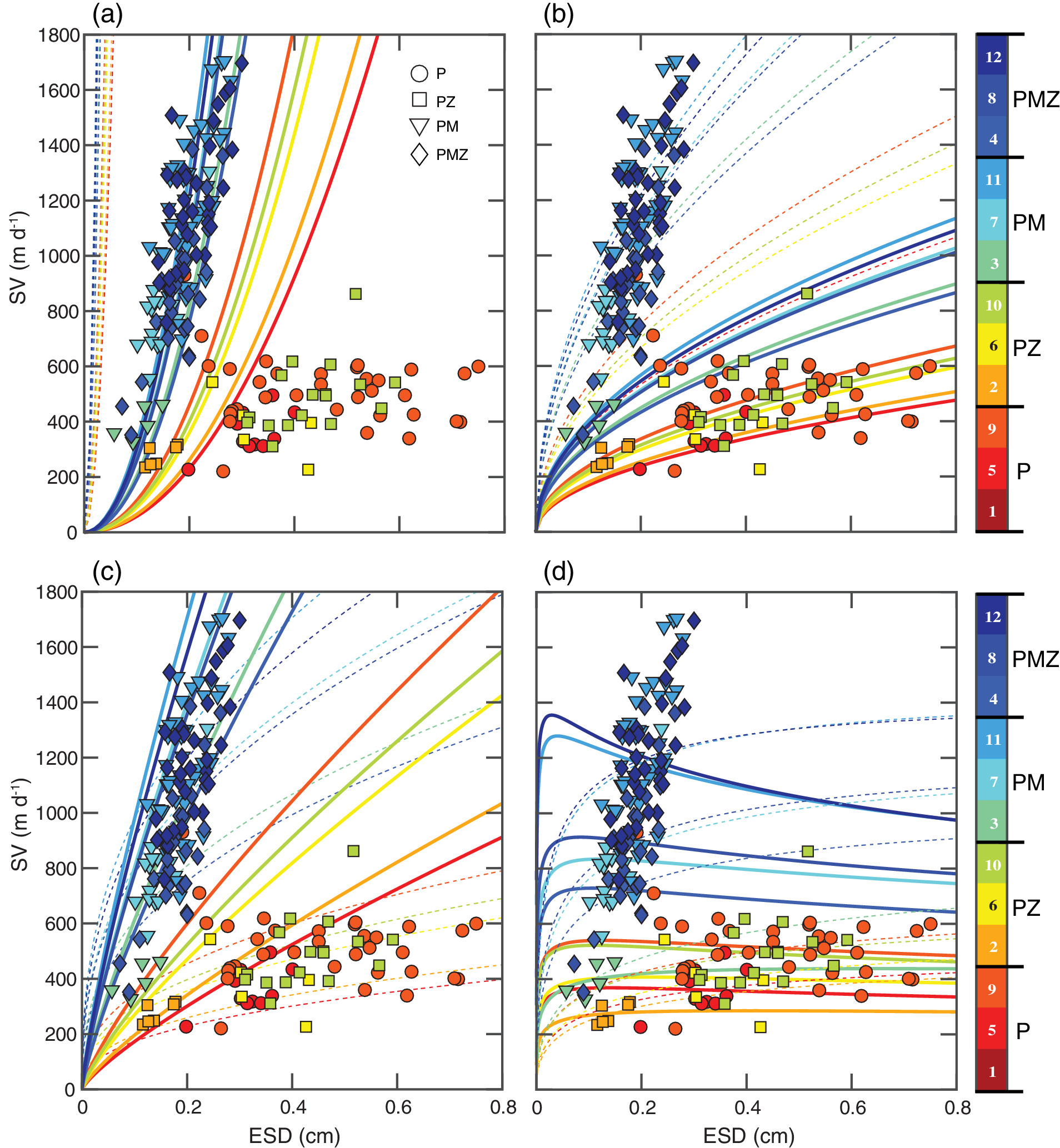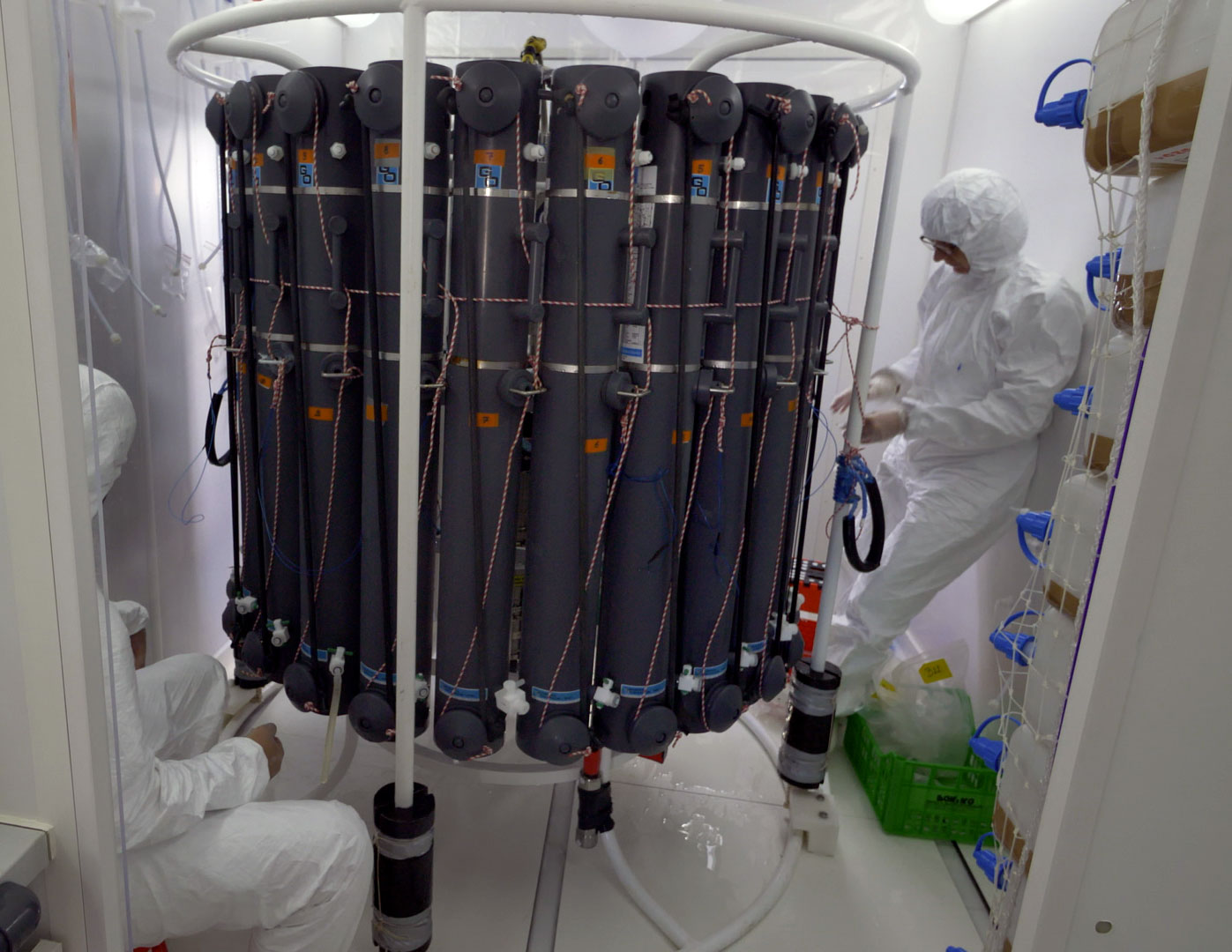Merry Christmas & Happy New Year
The LEMAR lab wishes you happy Holidays and a 2021 year better than 2020 (it shouldn’t be too hard, though…)
Thanks to Valentin Foulon, Natalia Llopis & to the radiolarians for this graphic creation.
The LEMAR lab wishes you happy Holidays and a 2021 year better than 2020 (it shouldn’t be too hard, though…)
Thanks to Valentin Foulon, Natalia Llopis & to the radiolarians for this graphic creation.
The American Geophysical Union (AGU) has declared “Research Spotlight” the recent article by Natalia Llopis-Monferrer in “Global Biogeochemical Cycles” on the importance of radiolarians (marine planktonic organisms) in the silicon cycle of the world ocean.
This recent work re-evaluates the role of these tiny protists, which could contribute up to one-fifth of the world’s silica production by marine organisms.
Natalia Llopis-Monferer is a spanish student at LEMAR (UMR 6539). She is co-supervised by Aude Leynaert (CNRS), Fabrice Not (SBR) and Paul Tréguer (UBO).
Numerical simulations of ocean biogeochemical cycles need to adequately represent particle sinking velocities (SV). For decades, Stokes’ Law estimating particle SV from density and size has been widely used. But while Stokes’ Law holds for small, smooth, and rigid spheres settling at low Reynolds number, it fails when applied to marine aggregates complex in shape, structure, and composition. Minerals and zooplankton can alter phytoplankton aggregates in ways that change their SV, potentially improving the applicability of Stokes’ models. Using rolling cylinders, we experimentally produced diatom aggregates in the presence and absence of minerals and/or microzooplankton. Minerals and to a lesser extent microzooplankton decreased aggregate size and roughness and increased their sphericity and compactness. Stokes’ Law parameterized with a fractal porosity modeled adequately size‐SV relationships for mineral‐loaded aggregates. Phytoplankton‐only aggregates and those exposed to microzooplankton followed the general Navier‐Stokes drag equation suggesting an indiscernible effect of microzooplankton and a drag coefficient too complex to be calculated with a Stokes’ assumption. We compared our results with a larger data set of ballasted and nonballasted marine aggregates. This confirmed that the size‐SV relationships for ballasted aggregates can be simulated by Stokes’ models with an adequate fractal porosity parameterization. Given the importance of mineral ballasting in the ocean, our findings could ease biogeochemical model parameterization for a significant pool of particles in the ocean and especially in the mesopelagic zone where the particulate organic matter : mineral ratio decreases. Our results also reinforce the importance of accounting for porosity as a decisive predictor of marine aggregate SV.

Sinking velocities vs. ESD (equivalent spherical diameter) for aggregates formed in each tank of the four treatments and comparison with theoretical expectations from different parameterizations of Stokes’ Law and the general Navier‐Stokes’ drag equation. P: phytoplankton; PZ: phytoplankton + microzooplankton (rotifers); PM: phytoplankton + mineral (calcite); PMZ: phytoplankton + mineral + microzooplankton. (a) Model 1, Stokes’ Law with constant porosities of 0% (dashed lines) and 99% (solid lines). (b) Model 2, general Navier‐Stokes’ drag law with constant drags of 1 (dashed lines) and 5 (solid lines), and a constant porosity of 99%. (c) Model 3, Stokes’ Law with a porosity scaled on a fractal geometry with coefficient a = 0.03 and D3 = 1.4 (dashed lines) and D3 = 1.8 (solid lines). (d) Model 4, general Navier‐Stokes’ drag law with a porosity scaled on a fractal geometry with coefficient a = 0.03 and D3 = 1.4 (solid lines) and 1.8 (dashed lines). See the text for details on drag calculation
Reference
Ika Paul-Pont, récemment distinguée par le CNRS d’une médaille de Bronze pour les travaux qu’elle mène avec ses collègues sur la contamination par les microplastiques, a été invitée à participer à une table ronde sur l’état de la recherche scientifique en France. Cet échange, en présence d’Emmanuel Macron et de Frédéric Vidal et animée par Mathieu Vidard, s’est déroulé dans le cadre d’une cérémonie qui a marqué la clôture d’une année de festivités autour des 80 ans du CNRS. Ce fut l’occasion pour les scientifiques invités de mettre en lumière des problématiques au cœur du fonctionnement de la recherche française.
(début de la table ronde à 12’40)
David Gonzalez Santana and Géraldine Sarthou from the Chibido team are on board the R/V Atalante in the South Pacific for the TONGA cruise (PIs Sophie Bonnet (MIO) and Cécile Guieu (LOV), + link on the CHIBIDO team website).
The objective of TONGA is to study the inputs of trace elements from shallow hydrothermal sources and their potential impact on biological productivity and the biological carbon pump.
Halfway through the cruise, they are on their way to the ultra-oligotrophic waters (their reference station) after having studied a shallow area (~ 200 m) particularly intense in terms of hydrothermal activity.
Then, the search of a second hydrothermal site is scheduled.
You can follow them on their Twitter account.

(C) Hubert Bataille/ IRD